(Photos by Dave Nutting) – It was all too fitting to be at Connecticut’s beautiful Lime Rock Park road racing facility on Friday July 6th to see the factory Corvette Racing team practice and qualify for the 2012 American LeMans Series New England Grand Prix. After all, the ‘Vettes are the lone American car competing in the series, battling the likes of BMW, Porsche, Ferrari, and Lotus on road courses both here and abroad. With the 4th of July having just passed a scant couple of days before, patriotism was still thick in the air when Dave Nutting and I arrived at the hallowed ground of Lime Rock. Also the temperature was rocketing off the charts and the clock had barely rolled past nine, it was not a day to envy the men in their firesuits.
I should probably begin with an admission. Neither Dave nor I are hard core ALMS fans. This was going to be a learning experience for us. My background does include amateur level road racing and I certainly have watched the ALMS series on television in passing, paid attention to Corvette Racing’s triumphs and victories at places like LeMans over the years, and I spent the days before the race doing my due diligence to be as informed about the team and the series as possible when we arrived. While my advanced scouting was certainly handy and helpful, the real education came when we got to the track, found the lay of the land and started paying close attention to what was going on.
[divider]
Soon after we arrived, the teams were finishing up their preparation for the first practice session of the day and it became readily apparent to both Dave and I that the ALMS is a fan friendly environment. The pit experience is akin to going to the drag races where the teams are servicing their cars in the open, albeit set back to keep the most prying eyes at bay. You can watch the mechanics work, see components being shuffled on and off of cars, stand within inches of the cars and drivers as they head through the pits to the grid, and really feel as though you are a part of the action.
The Corvette Racing team fields two cars and as you’d expect they were pitted side by side with two crews concentrating on their individual jobs on each car. We watched them lower and raise the cars off of the four individual scales a couple of times, making last minute adjustments before locking everything down, loading the cars with fuel, and towing them through the paddock (pits for you hot rodders out there).
Road racing certainly has carried the image of exclusivity in the USA since it exploded in popularity in the 1950s. Some of that is deserved and some is pretty far over the top. When we watched the mechanics wrench on the cars, those guys were as hard working, gritty, and dirty as any race mechanic you’d find in other genres of motorsport and it was immediately clear that pretty boys need not apply. It is hard core to the bone.
The cars that compete in this series are some of the sexiest beasts you’ll ever see in person. From the prototypes to the exotic Ferraris and wide bodied BMWs, along with the muscled up Corvettes, it is eye candy city. The best part is that all of the eye candy is fully functional and 100% bad ass.
With the action about to start, we sought some good positions to shoot photos from and watch our first live ALMS action.
[divider]
I love observing things. When I work as a race announcer, I really like using all of my senses to convey what’s going on to the people listening, watching, or sitting in the stands. Within just a couple of laps at the ALMS race, all mine were tingling. Being a gearhead is all about sensory experiences. Go to a NASCAR race and 40 stock cars roar by in unison, hit the drags and a nitro fueled dragster will make you feel like a hollow log, and this event had a flavor of its own. So many unique and different sounds and engines, all working on the track at once. It was brilliant stuff.
One of the neatest things about the ALMS experience was honing in on the various sounds that these different cars made while headed around the 1.53-mile course at Lime Rock. The Ferrari and the absolute shriek that escaped from the 4.5L V8 engine was a sound that hit you right between the eyes. You could feel that car and the echos of the exhaust as it ran away for the rest of the course. The BMWs had their own yell, also of the high pitched V8 variety. Like the Ferrari, the BMW engine is a multi-cam piece with four valves per cylinder. The Porsches with their six cylinder boxer engines were muted in comparison to the other two cars and the lone Lotus Evora GTE of Alex Job Racing, powered by a Cosworth built V6 was potentially the loudest car of the bunch. Then there were the Corvettes with a rumble and guttural roar that every gearhead, no matter the time or place knows is created by an American pushrod V8 engine. While the sounds of the screaming multi-valve engines were similar, there wasn’t a damned thing at Lime Rock that sounded like the two C6.R Corvettes. From clear across the other side of the course over the giant spectator hill and all, you could tell by ear exactly where they were. We knew when they pulled in for a driver change or tires because that rumble would quit for a minute or two and then as soon as we wondered what was up, it would begin again. If the Ferrari’s scream would have scared the birds from the treetops, the Corvette’s roar drove the termites from the roots.
[divider]
The Corvette C6.R by Pratt and Miller Engineering is the weapon of choice for the team and it is based on the mighty Corvette Zr1. The race car uses the same hydroformed aluminum chassis as the street car, which acts as the foundation for the steel tube roll cage. There’s an amazing amount of engineering that went into making sure that the car was built as strongly, stiffly, and lightly as possible. Outwardly, the only real deviations from a road going car in the looks department are the muscularly flared fenders, side exhaust and hood treatment. What’s great about the Corvettes and really the rest of the cars in the GT class is that with one look and no confusion you know exactly what type of car it is. The brand identification lost in drag racing and stock car racing is alive and well in the ALMS series. (No counting the prototypes…which resemble awesome space craft on wheels)
Even the engines, as mentioned above are based on production pieces. Yes, there’s lots of engineering and optimization happening and the mills are not plucked right off of the assembly line, but like the cars there are production pieces (i.e. cylinder blocks, heads, etc) used in the motors.
[divider]
Speaking of that pushrod V8 engine. The photo to the left is of a display mill that was available for the public to gawk at. The LS based engine is designed to be an endurance piece. It makes peak power at less than 6,000RPM and peak torque at less than 5,000RPM while displacing about 5.5L. The intake manifold is potentially the coolest carbon fiber piece we have ever seen. It is a hybrid between a cross ram and a tunnel ram which includes eight individual throttle bodies actuated by a single linkage that is so simple and elegant, Nutting and I almost shed a tear over the design. The fuel injectors are placed very high at the top of the piece, presumably to take advantage of the cooling effect the fuel has while traveling through the intake.
As we were looking at the engine, a pair of kids in their mid-20s took an interest, looking over the piece and reading the associated spec sheet. These guys seemed pretty well to do and we thought that they were probably more interested in the foreign cars than the Corvettes. Our thoughts were validated when one kid looked at the other and said, “Hey this thing only has two valves per cylinder.” The second kid looked up and said, “Really? Weird.” They then wondered aloud for a minute or two about how this engine could possibly compete with the others.
We smiled and gently patted it on the valve cover before moving on.
[divider]
The day was divided into a long morning practice session, a break, an afternoon practice, and then individual qualifying for the different ALMS categories. If you are not familiar with the series, on race day all of the categories are out on the track together, but they do qualify them individually prior. The Corvettes compete in the GT class.
Lime Rock for all intents and purposes, is the ALMS road racing equivalent to NASCAR’s Bristol race. The track is barely over a mile and a half long, good laps are sub-one minute, great laps are sub-fifty seconds. Allan McNish, a former ALMS champ was once quoted as saying that racing a prototype around Lime Rock was like flying, “A fighter plane in your living room.” It was easy to understand this sentiment when all of the cars were out on the track at the same time. The protoypes were constantly passing the GT cars and it made for frenetic viewing. A beautiful Porsche got punted and was loaded onto a flatbed to ride into the paddock for repairs. It looked ugly and it was only the morning practice session!
[divider]
Watching the Corvette Racing team thrash in the pits was a great way to appreciate just how amazing these cars are and how hotly contested this series really is. We were told (in friendly but firm fashion) that detail photos of the car with body panels removed were verboten. As secretive and protective as NHRA Pro Stock drag racers are, these guys have them beat by a country mile. When huge multi-national companies (BMW, GM, Ferrari, Porsche) decide to throw hay makers at one another on race tracks in both North America and across the world, maintaining your technology and competitive advantage are paramount.
We’ve seen drag race teams, stock car teams, sprint car teams, and hell, monster truck teams thrash on their equipment in the pits but this was definitely different. While a fuel car crew rebuilding a Hemi between rounds is a lot of frantic action, asses and elbows posturing, and air tool noise, the guys wrenching on the Corvettes were virtually surgical. There was minimal conversation and maximum action. They’re both fine tuned units. Despite the crushing heat and humidity, the guys went about their work as they’ve probably done so many times before. Watching them snap the body panels back on the car like a 1:1 sized model was crazy and seeing how much carbon fiber and lightweight composite was involved in the construction of said panels was really something else.
The level of organization and cleanliness in the pits impressed us as well. Not to say that others are disorganized or slobby, but both sides of the large pit area were as neat as a pin with nary a wrench out of place. As we said, surgical.
Then there were all the tires…
[divider]
Good tires at the life blood of any road racing team and series. Unlike most other forms of professional racing, where one brand becomes the “official” tire, there’s still a legit tire war going on in ALMS and I can see why. I have never in my life seen so many tires in one place. There was a constant stream of little flatbed trucks hauling slicks to and fro from each team. Each car would have between 8-12 tires on rolling racks that went with them to the grid (along with the four that were bolted to the car!). The Corvette team runs on Michelins. Since it was dry conditions at Lime Rock, they were on slicks, but had it been wet, they have treaded tires to use as well. Both Dave and I were lamenting the fact that the action shots would have been bitchin’ in the rain but it was feeling more like Death Valley in Connecticut.
There’s no way that less than a tractor trailer load of tires were consumed over the course of the weekend. At any given moment you could look around and see 50-100 mounted tires in virtually every direction. Mind boggling and pretty cool at the same time.
Michelin, Dunlop, and Falken are all involved in the ALMS series and we saw a healthy dose of all three tires around the pits. The BMWs that Corvette Racing has been closely battling this season wear Dunlops and some of the other competition is shod with Falkens. To us, this is another neat element of ALMS racing that we learned about. For decades, multi-leveled competition was a hallmark of all motorsports. From the companies that built the cars to the companies that made the brake pads that stopped them, everyone wanted to be better than the next guy. Most of that has been lost to “spec” rules that dictate what can be done and used in lots of series. Good to see this end of the competitive spirit alive and well in ALMS.
[divider]
 The most crazy, eye-opening thing for us during our day at Lime Rock was getting to sneak behind the fence and stand along with the team at their pit spot on the track. Pit spot is a horribly insufficient phrase to describe something that looks as though it is the mobile command center for NASA. As you can see in the photo on the right, there was a bank of 18(!!) screens that team members were monitoring along with roughly 20 other lap top computers, guys on radios, etc. The sheer level of technology packed into these cars and how the teams monitor them is stunning. It makes the days of three guys on the wall with a lug wrench and a chaulk board seem equivalent to the era of dinosaurs roaming the Earth. Every aspect of the race is bring monitored from this space and we’d be lying if we told you we knew what the heck even half of the team members with lap tops were doing. Most of the cars have data jacks right in the side of them to plug a computer in to either download info or tweak the tune up (we suppose). This makes a computer equipped Top Fuel dragster look like a horse drawn beer wagon in terms of sheer technology.
The most crazy, eye-opening thing for us during our day at Lime Rock was getting to sneak behind the fence and stand along with the team at their pit spot on the track. Pit spot is a horribly insufficient phrase to describe something that looks as though it is the mobile command center for NASA. As you can see in the photo on the right, there was a bank of 18(!!) screens that team members were monitoring along with roughly 20 other lap top computers, guys on radios, etc. The sheer level of technology packed into these cars and how the teams monitor them is stunning. It makes the days of three guys on the wall with a lug wrench and a chaulk board seem equivalent to the era of dinosaurs roaming the Earth. Every aspect of the race is bring monitored from this space and we’d be lying if we told you we knew what the heck even half of the team members with lap tops were doing. Most of the cars have data jacks right in the side of them to plug a computer in to either download info or tweak the tune up (we suppose). This makes a computer equipped Top Fuel dragster look like a horse drawn beer wagon in terms of sheer technology.
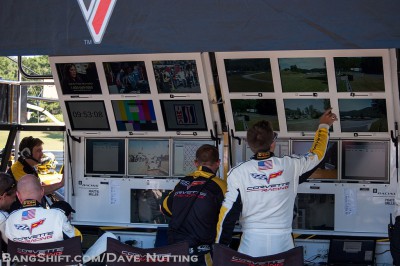 Like when we observed the team working in the paddock, everyone had a job and everyone was doing it as soon as the car was fired up and moving. The lead guys worked on strategy and planning from atop the massive wall of video screens while the drivers and other crewmen monitored the screens and watched what their car was doing on the track in preparation for an upcoming stint. It is a breathtakingly awesome sight to see buzzing with activity during practice and racing conditions…and that’s before the pit stops happened.
Like when we observed the team working in the paddock, everyone had a job and everyone was doing it as soon as the car was fired up and moving. The lead guys worked on strategy and planning from atop the massive wall of video screens while the drivers and other crewmen monitored the screens and watched what their car was doing on the track in preparation for an upcoming stint. It is a breathtakingly awesome sight to see buzzing with activity during practice and racing conditions…and that’s before the pit stops happened.
[divider]
When the car came in for tires and a splash of fuel during the practice session the Corvette Racing team sprung into action and completed their respective tasks with the same level of composed fury they had in the pits. These cars have a single lug wheel, unlike stock cars that still retain a five lug setup. The speed with which one guy can remove and replace one is impressive, as is the speed at which the quick discharging gas cans can throttle 10 gallons of fuel into the tanks on a stop. During our college days both Dave and I were handy with the beer funnel, but not to the level of these things. 10 gallons were discharged in a matter of seconds without a drop hitting the ground.
[divider]
The Corvette Racing team and their two C6.R cars qualified well and ended up with a 2-3 finish in the GT class at Lime Rock on Saturday. A lone Porsche snuck ahead of them late in the game and held of their furious charges through the last laps of the event. Currently, the Corvette Racing team leads the team points standings in the GT class and the two team cars sit first and third in terms of driver points. There’s a lot of racing left to do this season, though and the BMW team currently poses the biggest threat to Corvette Racing’s lead in the class. From our outside observers position, it seems that ALMS has done a very good job of maintaining parity among the different brands and makes in the GT class as the points indicate a dog fight will be had right until the last checkered flag of the season.
[divider]
 Being able to spend the day with the Corvette Racing team and get up close and personal with the awesome and hairy chested C6.R was really something else. There’s lots of junk to be depressed about in the automotive world today but when you get to see a factory supported team like Pratt and Miller go out there and make mince meat of cars which have road going variants owned by snobby jerks who take pot shots at the Corvettes, it is smiles all around. From the throbbing growl of the motor to the bulging muscular fenders in the front and rear of the car, the C6.R is everything good about American road racing heritage and history. In some respects it is a mechanical anachronism, but that mechanical anachronism is wrapped and swaddled in layers of space aged technology that meets or beats the competition on many fronts.
Being able to spend the day with the Corvette Racing team and get up close and personal with the awesome and hairy chested C6.R was really something else. There’s lots of junk to be depressed about in the automotive world today but when you get to see a factory supported team like Pratt and Miller go out there and make mince meat of cars which have road going variants owned by snobby jerks who take pot shots at the Corvettes, it is smiles all around. From the throbbing growl of the motor to the bulging muscular fenders in the front and rear of the car, the C6.R is everything good about American road racing heritage and history. In some respects it is a mechanical anachronism, but that mechanical anachronism is wrapped and swaddled in layers of space aged technology that meets or beats the competition on many fronts.
We don’t begrudge the two kids that thought it was weird the C6.R was powered by an engine with only two valves per cylinder and pushrods, but that doesn’t mean we weren’t cheering a little harder each time a Corvette swallowed up a Ferrari or BMW on the course.
It was a great day of enlightenment for us both in terms of the ALMS series, which we would wholeheartedly recommend every gearhead with an interest get out to see, and in terms of professional level modern road racing in America. We’re in good hands with the men and women of Pratt and Miller Engineering and Corvette Racing. They’re out there essentially fighting like the guys at the Alamo…surrounded and out manned by a foreign army. The major difference? These guys are winning. Two valves and all.




















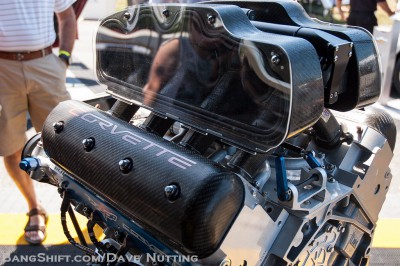
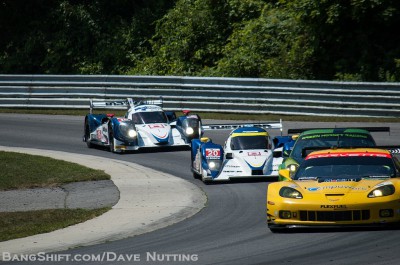
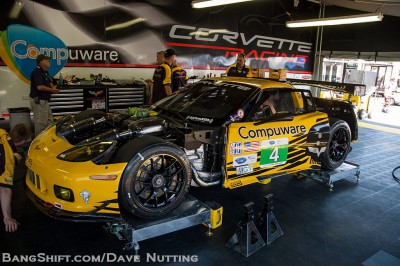

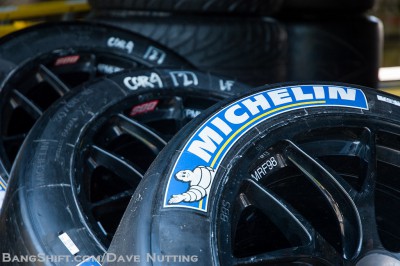



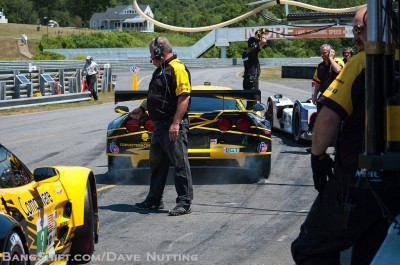




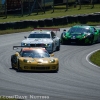


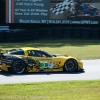


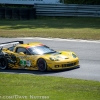




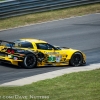

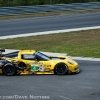
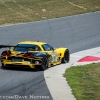


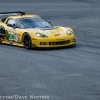




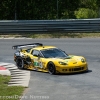


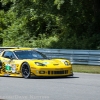
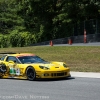
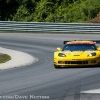
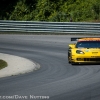




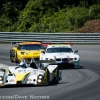



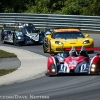


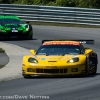








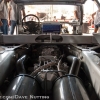


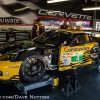

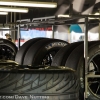
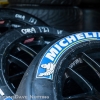


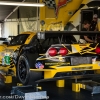





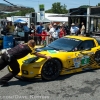




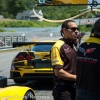


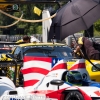



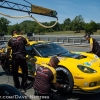

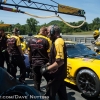



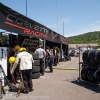
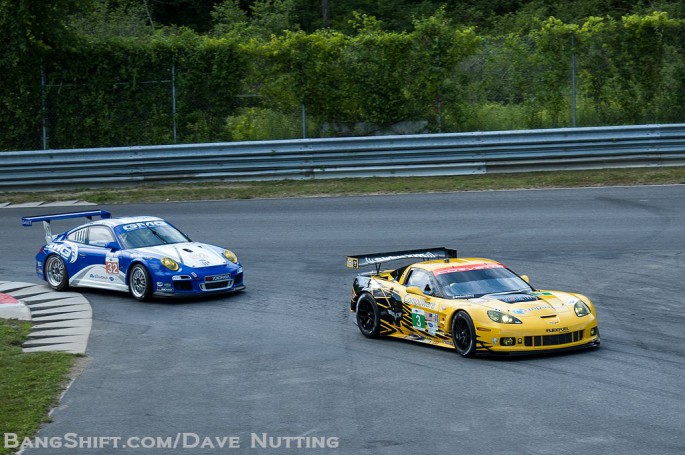





Very good write up, I attended and came away with much the same impression. I like the insight you guys provide on unique events like this one, their was some serious racing going on ($$)!–thanks for covering it!
Thanks a bunch for sharing this with all folks you really know what you are talking about! Bookmarked. Please additionally talk over with my website =). We could have a hyperlink alternate contract between us